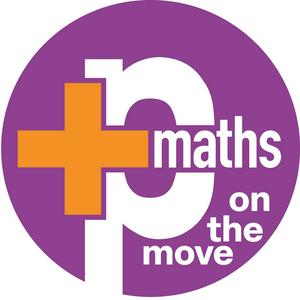Playing with VisualPDE
What is as hypnotising as a beautiful goldfish circling its bowl, but can help you understand the way a virus can spread? The answer is one of the beautiful interactive simulations produced by VisualPDE !
In this podcast we talk to Benjamin Walker from University College London, and to Adam Townsend and Andrew Krause from Durham University, who together created this online solver of partial differential equations. Such equations describe how quantities change over space and time and therefore used throughout science to describe processes that play out in the real world — from the transmission of airborne viruses to the flow of water during a flood. Ben, Andrew and Adam tell us about their motivation for building VisualPDE and what they can do with it.
We met Ben, Andrew and Adam through the Mathsci-comm network for people who communicate maths and data science to non-expert audiences. As you can see by playing with the simulation below, VisualPDE is a great tool for communicating maths research to non-experts, as well as allowing mathematicians to quickly simulate what their mathematical models can tell them.
Adam is also part of the team behind the brilliant Chalkdust, a magazine for the mathematically curious. Why not order the latest issue for a Christmas gift?
Play with the simulation!
Suppose that lots of people are sitting in a sealed room and one of them is infectious. We'll assume that the infectious person is constantly producing virus-laden particles that spread out around them and lose their potency over time. The simulation below shows what this might look like. The colour corresponds to the concentration or amount of the virus in the air.
With VisualPDE, we're not just limited to watching a simulation: we can interact with it too. Clicking in the room will introduce some viral particles to the air, as if someone with an infection had coughed (coughing is actually a lot more complicated and is the focus of lots of research). Try clicking to see what difference a cough can make.
Though each cough introduces some virus to the room, it looks like it quickly decays away until we can't even tell it was there. So, does this mean we shouldn't be worried about a cough?
To explore this further, let's look at the probability (or chance) of getting an infection, which is related but not equal to the virus concentration. Specifically, we'll look at the chance of catching the virus assuming that you'd been in the same location for the duration of the simulation. With VisualPDE, we can do this by switching to the Probability View by pressing and choosing "Probability".
Now for the goldfish. People don't always stay still in the middle of rooms. Unsurprisingly, the movement of an infected individual can have a big impact on the spread of a virus. The next simulation is set up so that the source of the infection moves around the room, as if they were a waiter going between tables in a restaurant, perhaps. The air conditioner is turned off, so that the air in the room is still.
The Probability View shows the build-up of a ring of likely infections as the infectious person circles the room. A quick look at the Concentration View shows their circular path, leaving a trail of viral particles behind them.
To find out more about this simulation and how to explore it, go to the VisualPDE site.
The two scientific papers mentioned in the podcast are:
Predicting the spatio-temporal infection risk in indoor spaces using an efficient airborne transmission model by Zechariah Lau, Ian M. Griffiths, Aaron English and Katerina Kaouri
Turing Instabilities are Not Enough to Ensure Pattern Formation by Andrew L. Krause, Eamonn A. Gaffney, Thomas Jun Jewell, Václav Klika and Benjamin J. Walker

